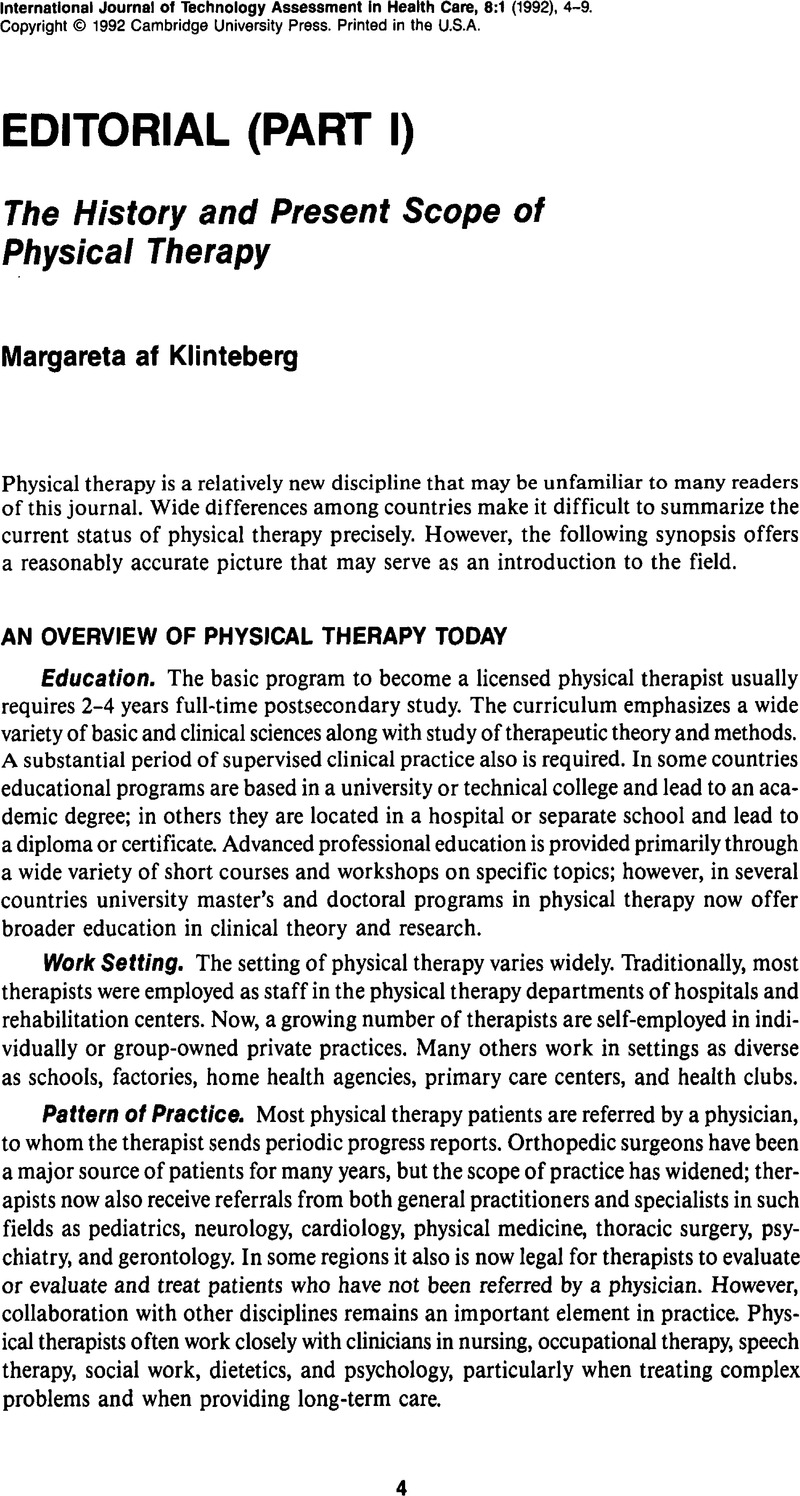Crossref Citations
This article has been cited by the following publications. This list is generated based on data provided by Crossref.
Watts, Nancy T.
1992.
Editorial (Part II) Assessing the Technology of Developing Health Occupations: Obstacles, Risks, and Strategies for Future Work.
International Journal of Technology Assessment in Health Care,
Vol. 8,
Issue. 1,
p.
118.
Lewinter, Myra
and
Mikkelsen, Susy
1995.
Therapists and the rehabilitation process after stroke.
Disability and Rehabilitation,
Vol. 17,
Issue. 5,
p.
211.
Marques, Alda
Oliveira, Ana
Machado, Ana
Jácome, Cristina
Cruz, Joana
Pinho, Tânia
Hall, Andreia
Alvelos, Helena
and
Brooks, Dina
2019.
Cardiorespiratory physiotherapy as a career choice—perspective of students and physiotherapists in Portugal.
Physiotherapy Theory and Practice,
Vol. 35,
Issue. 11,
p.
1094.
Fjær, Erlend L.
Landet, Erling R.
McNamara, Courtney L.
and
Eikemo, Terje A.
2020.
The use of complementary and alternative medicine (CAM) in Europe.
BMC Complementary Medicine and Therapies,
Vol. 20,
Issue. 1,
Spitznagle, Theresa
2022.
A Multidisciplinary Approach to Obstetric Fistula in Africa.
p.
451.



